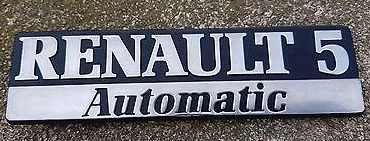 All sales of new petrol and diesel cars as we know them today will cease in the UK by 2040, under Government plans to tackle air pollution. The ban is planned because poor air quality is thought to be linked to about 40,000 premature deaths a year.
All sales of new petrol and diesel cars as we know them today will cease in the UK by 2040, under Government plans to tackle air pollution. The ban is planned because poor air quality is thought to be linked to about 40,000 premature deaths a year.
What this means to the average ADI is that in little more than 20 years’ time it will be impossible to buy the kind of cars that driver trainers currently use to teach nearly 95% of all new drivers – cars with manual gear boxes.
Only automatic vehicles will be available, in either full electric cars, cars with hydrogen fuel cells or hybrid vehicles, which combine petrol and electric motors, which will not be included in the sales ban.
The number of new category B drivers passing their test in an automatic car has risen year on year over the last ten years increasing from 26,400 in 2007/08 to 56,172 in 2016/17 bucking the trend of manual test passes which declined from 779,317 in 2007/08 to 677,255 in 2012/13 rising to 815,168 in 016/17. This is a doubling of the percentage of category B automatic only licences issued from 3.4% of the total to 6.9%.
The question then – How to we cope with the transition from training and testing in manual vehicles to only having automatics available? Well how about this for an idea
Holders of category B drivers’ licences limited to automatic gearshift vehicles, for non-medical reasons, will be authorized to drive manual shifting vehicles of the same category provided that they undergo training under certain conditions see below the Training Programe
Training cannot be completed fewer than six months after the category B (automatic) is obtained. Compliance with this condition is verified at the student’s enrollment by the DVSA ADI providing the training.
The training, will last seven hours, must be practical and tailored to the individual. It may be carried out partly on a simulator without the sequence exceeding the duration of one hour. Theoretical contributions, in connection with the practice, can be taught in the vehicle.
 The training shall be provided by a DVSA ADI (car)
The training shall be provided by a DVSA ADI (car)
The training will be provided on a car with a manual gearbox.
At the end of the training, the ADI will issue a certificate which will be forwarded to the licencing authority, similar to the Pass Plus system.
TRAINING PROGRAMME
- The training is carried out under the effective and constant presence of a fully qualified ADI.
- Conditions for the organisation of the training:
- The training lasts seven hours.
- It shall be provided in a manual gearshift vehicle with dual controls.
- The training starts in a zero or low traffic area and continues on busier roads.
- Aim of the training:
- At the end of the training, the driver must be able to safely use a vehicle equipped with a manual shift simultaneously with the other driving tasks.
- Structure and content of the training
- This training is practical, but theoretical inputs are required by the teacher on board the vehicle.
 Training comprises two sequences:
Training comprises two sequences:
- Sequence 1: duration of 2 hours.
- In low or no traffic, the student must have the following knowledge and skills:
- understand the principle of the clutch biting point and ensure its implementation;
- be able to safely carry out a hill start.
- A part of this sequence, limited to one hour, can be carried out on a simulator, notably to learn how to use the manual transmission.
- Sequence 2: duration of 5 hours.
- This sequence takes place in a variety of simple and complex traffic conditions. It allows the acquisition of the following skills:
- knowing how to use the manual transmission rationally and safely under the aforementioned traffic conditions and adopting ecosafe-driving techniques;
- be able to steer the vehicle by adapting the course and the trajectory to the environment and to the traffic conditions.
Sounds like a reasonable system? I have edited these requirements slightly to reflect British terminology and practice however, essentially it is the system introduced in France in October 2016.
Je suggère maintenant qu’il est temps d’introduire un système similaire en Grande-Bretagne.
I suggest now is the time to introduce a similar system in Great Britain.

Be First to Comment